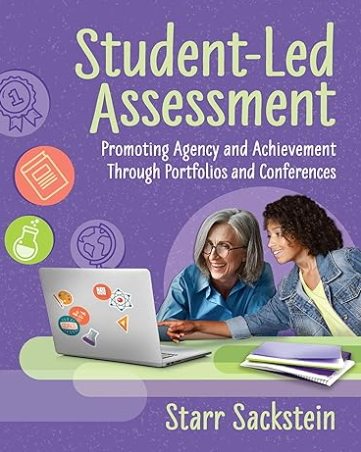This is my first contribution to a major publication for all teachers—not just those teaching Latin—since I officially began researching grading practices at UMass. I’ll get to what you’ll find from me in Starr’s book later, but I just received my copy and wanted to share some top reasons why you probably want this book…
Standards
As I’ve written before, “I’m more of a ‘burn it to the ground’ kind of guy, advocating for little to no grading whatsoever, but I’ve also found that a basic understanding of standards is crucial to ungrading” (from this post back in December). Starr’s book includes what I consider a comprehensive bonus section on unpacking standards (pp. 15-35). Don’t skip it. Go slowly so you can absorb what the final product of unpacking standards—by teacher teams, not individuals—truly looks like. In other words, these pages aren’t the kind of thing you sit down and crank out in a single planning block, alone. Note, too, how all the unpacking is for just 3 main standards. My review of the literature so far, PLUS personal experience shows that the fewer the standards you’re working with, the better. The example in Starr’s book underscores that. It would be unnecessary to do this work for 10-15 standards.
So, select your TOP 1-5 standards, and use the templates if you’ve got teacher teams and a PD focus on developing them this year. Or, go with something simpler that doesn’t need as much unpacking. That’s what I did. Either way, this section of the book sets up educators to think, assess, and grade (or not grade) in terms of standards criteria instead of traditional 7 out of 10 correct = 70% thinking, assessing, and grading that helps no one. It needs to be clear to students what’s being assessed, and working from a standards perspective is the best way to do that.
Portfolios
This section of the book (pp. 46-60) is really helpful for conceptualizing how portfolios can operate. There are helpful distinctions, too, like portfolios types used as capstones, showcasing achievement, progress/growth, professional, assessment, or a hybrid of the lot. I simply considered my portfolios places to put “learning evidence,” which fall under a few of those types, yet the distinctions should help struggling teachers see the different ways portfolios can be used in their classes.
Feedback
Lisa Hicknell, another contributor from Canada, wrote about using Mark Barnes’ SE2R model (see the end of this post for what that is and how I used it, too), and how nothing in her portfolios had a grade on it. There are strong gradeless and ungrading tones throughout the book. Good!
Schoolwide Implementation
Perhaps the greatest contribution to this book is from Katie Harrison. In fact, I wish I had this information before holding the Equitable Grading Coordinator role at my last school for a couple years. In sum, she documented her school’s transition to a portfolio system over five years that started with small groups of teachers piloting it all—because getting all teachers to make one small change the same way is seemingly impossible—then loads and loads of PD to support more and more of them. This is a good model to follow if there are plans to move things beyond your own classroom.
Conferencing
There are examples of protocols, timelines, templates, and strategies on how to meet with students during class time (without sapping learning time), including how a professor, Dr. Jay C. Percell, does it at the college level. Not only have a lot of grading practices come to K-12 through colleges, but these examples help the “bUt WhAt AbOuT wHeN sTuDeNtS gEt To CoLlEgE?!” arguments, showing that things in colleges aren’t what they used to be, and/or that they aren’t the same as Teacher X’s college. The topic continues with how to replace teacher conferences with a student-led style. I like how this model can then be applied to course grading as well, like I did.
My Contributions
As far as my stuff goes, you’ll find the following…
- The last iteration of standards I was using last year, Process and Growth (i.e., progress), both with student-friendly examples (and non-examples) that unpack the standard, and definitions to help during self-assessment (e.g., defining what “potential” meant since students provided evidence that showed their growing understanding of Latin and how they were meeting their own potential)
- An older example of the Expectations-based Grading criteria and rubric I was using—though an unfortunate typo shifted the grade equivalents up by one (i.e., 100(A+) was left out, so it looks like the highest grade possible for exceeding expectations is 95(A), etc.), along with a few pages describing my progression of assessment tools over the years
- A couple pages on our schoolwide student-led conferences, how I gave feedback, and how I got students to back up their self-grading with self-assessed rationales based on portfolio learning evidence
Student-Led Assessment is available:
